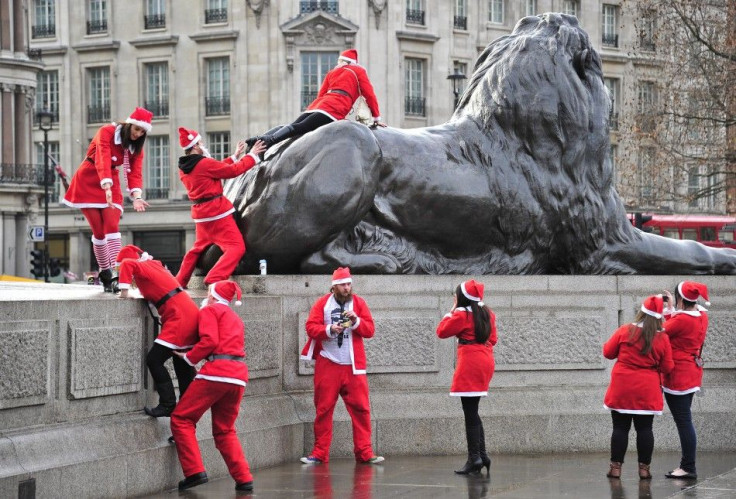Trafalgar Square Gets ‘The End,’ A New Whipped Cream And Fly Sculpture

A new sculpture depicting a giant swirl of whipped cream topped with a cherry, a fly and a drone was unveiled in London’s Trafalgar Square on Thursday. It is the 13th installation of the landmark’s Fourth Plinth, the site for a rolling commission of public artworks.
The newly introduced dystopian artwork, a creation of British artist Heather Phillipson titled “The End,” is described as representing “exuberance and unease” and dubbed a “monument of hubris and impending collapse.” It will occupy the position until Spring, according to a statement by London’s mayor.
The installation comes four months after it was originally planned due to the delays caused by the coronavirus pandemic. Phillipson said she came up with the idea for it in 2016, the same year Donald Trump won the presidential elections in the U.S. and the Brexit referendum took place.
“For me, we’ve been at a point of some kind of entropy for a long time. When I was thinking of this work there was a sense for me of an undercurrent that was already there … this feels like a continuation of that,” she told the Guardian.
The giant sweet treat is nothing like it is normally perceived, depicting something being on the verge of collapse as the ice cream appears to be slowly melting round the base of the plinth, with the fly making it look unappetizing.
The new 4th Plinth in Trafalgar Square unveiled 15 minutes ago -shall we title it 'one in the eye to Covid'! pic.twitter.com/4oLoTp7wLh
— Jon Snow (@jonsnowC4) July 30, 2020
The sculpture, at 31 feet, is the tallest so far in the history of the series of commissions on the Fourth Plinth beginning in 1998.
Passers-by will be able to live-stream with their mobile phones what the camera-equipped drone can see or they can log in to a website remotely to experience the installation digitally. The work replaces artist Michael Rakowitz’s recreation of a protective deity destroyed by the Islamic State in Iraq, Sky News reported.
Ekow Eshun, chairman of the Fourth Plinth commissioning group, described Phillipson’s artwork as "audacious and beguiling." "It expresses something of the fraught times that we're currently living through while also standing in conversation with the artistic and social history of Trafalgar Square," he said. “I'm sure this will be a hugely popular commission that will inspire everyone who sees it physically and experiences it digitally.”
The Fourth Plinth has been home to a number of memorable artworks over the years. The notable past installations include Marc Quinn's sculpture of pregnant Alison Lapper and Yinka Shonibare's scaled-down replica of HMS Victory, contained in a glass bottle.
“The Fourth Plinth is the world's most famous public art prize and each new sculpture breathes fresh life into our public realm,” Justine Simons, London's deputy mayor for culture and creative industries, said. “When Heather's work was selected two years ago, we could never have imagined the world we find ourselves in today, but we always knew this sugary swirl with a dystopian flavour would spark a conversation.”
Phillipson said she felt “mixed reactions” about the unveiling but was also thrilled. "Obviously it's a strange time to be doing anything right now ... But it also felt like it was never going to be the right time so maybe it was the right time to just let it happen," she said.
She told the BBC that the sculpture wasn’t necessarily meant to be "pessimistic" and that it implies a "chance of radical change."
© Copyright IBTimes 2025. All rights reserved.






















